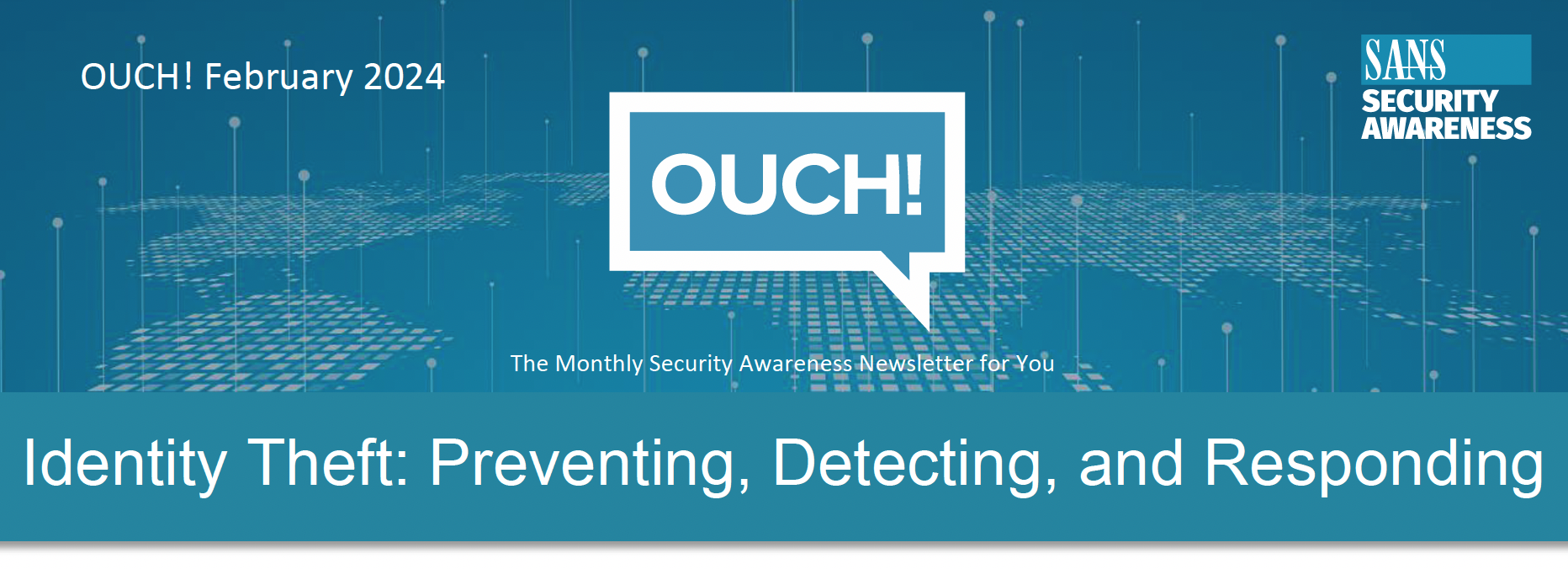
February Security Awareness – Identity Theft: Preventing, Detecting, and Responding
Detecting Identity Theft
Early detection is one of the most powerful ways you can protect yourself. The sooner you detect your identity is being used by someone else, the sooner you can act. Some of the most common indications of identity theft include:
Unusual Financial Statements:
Regularly monitor all your bank and credit card statements. You want to look for any charges or money transfers you know you did not make. A great way to do this is to enable automatic notifications. This way anytime there is a charge to your credit card or a change to your savings or checking account you are notified right away.
Irregular Credit Reports:
Annually review your credit reports for suspicious activity. You are looking for any new loans in your name that you know you did not make or any major changes in your credit rating.
Mysterious Bills or Notifications:
Be wary if you begin receiving bills for items you know you never purchased, or if you are contacted by payment agencies for unpaid bills for items or services you never purchased.
Unexpected Denials:
If you’re unexpectedly denied your tax refund, or a credit or a loan application, investigate why.
Responding to and Recovering from Identity Theft
If you are concerned that your identity has been compromised, act right away.
Report Immediately:
Report right away if you suspect an incident. For example, if you identify fraudulent activity in your bank account or credit card, contact your bank. Also, file a report with local law enforcement. This can be crucial in proving the crime and helping you recover any costs or file insurance claims.
Fraud Alerts and Credit Freezes:
Place a fraud alert on your credit reports and consider a credit freeze if you have not already. In addition, work with credit bureaus to remove fraudulent information.
Document Everything:
When calling organizations to recover, be sure to keep detailed records of your communications and actions taken, to include who you talked to, what date / time, and what was discussed.
Change Passwords:
Update passwords for all your key accounts. If you do not have a password manager to track all your new passwords, consider getting one.
Conclusion
By understanding what identity theft is and employing these measures, you can greatly reduce your risk of becoming a victim.
© SANS Institute 2023
Article Title: OUCH! February 2024 The Monthly Security Awareness Newsletter for You Identity Theft: Preventing, Detecting, and Responding
